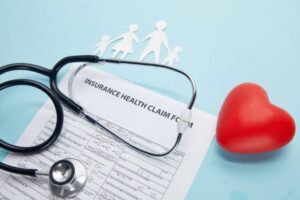
The Greek residential real estate market 2025 continues to show steady growth despite global economic challenges. Demand for housing remains high among both local residents and foreign investors, which contributes to higher prices and the development of new projects.

The U.S. Department of Agriculture (USDA) has released the April World Agricultural Supply and Demand Estimates (WASDE) report, which provides updated forecasts for wheat and corn production, consumption, trade, and stocks for the 2024/25 marketing year.
Corn: world market
– Production: the forecast is increased by 0.9 million tons to 1 215.1 million tons. Increased production in the EU (+1.3 mln tonnes to 59.3 mln tonnes) due to higher harvests in Poland, Croatia, France and Germany, partially offset by lower production in Romania and Bulgaria.
– Trade: Exports are revised upward by 2.3 million tons to 188.7 million tons, mainly due to higher exports from the United States (+2.5 million tons to 64.8 million tons).
– Stocks: World ending stocks are lowered by 1.3 million tons to 287.7 million tons, reflecting a decrease in US stocks and an increase in stocks in South Korea and Pakistan.

According to the decree of President Donald Trump, the United States imposes additional duties on goods from a number of countries. The size of the tariffs varies depending on trade relations with Washington. The biggest restrictions are imposed on Cambodia, Vietnam, and Sri Lanka.
Countries with the highest duties
Cambodia – 49%
Vietnam – 46%; and
Sri Lanka – 44%
Thailand – 36%
China – 34% of the total
Bangladesh – 34%
Taiwan – 32%
Indonesia – 32%
Switzerland – 31%
South Africa – 30%
Pakistan – 29% – 29
Japan – 24% – 24
Malaysia – 24%
South Korea – 25%
European Union – 20%
Israel – 17%
Philippines – 17%
United Kingdom – 10%
Brazil – 10%
Singapore – 10%
Chile – 10% (basic rate)
Ukraine – 10% (basic tariff without additional restrictions)
The duties will come into force on April 9, 2025. In addition, the 10% basic tariff will be applied to all goods, which increases the overall rate for countries with already established duties. For example, Chinese goods will be subject to 44% (34% + 10%), and goods from the EU – 30% (20% + 10%).
Canada and Mexico are not yet subject to reciprocal tariffs.
Reasons for the introduction of duties
President Trump called these measures “mirror sanctions”, emphasizing that they are intended to compensate for unfair trade practices of other countries. According to him, the United States cannot afford to be an “economic target” and must protect its producers.
According to Bloomberg, the measures will affect the $33 trillion global market. Countries from China to Brazil are under attack, and the volume of their exports to the United States may decrease by 4% to 90%. Average tariffs may increase by 15%, which will trigger inflation in the US and increase the risk of recession.
In addition, the Trump administration continues to tighten trade measures previously introduced since 2017. In particular:
An additional 20% tax on all imports from China has been introduced.
A global 25% tariff on steel and aluminum is in effect.
A 25% duty on imports of automobiles and spare parts (effective April 3, 2025).
Expected consequences
Experts predict that under the maximum scenario, average tariffs in the US will increase to 2%, which could lead to a 4% reduction in GDP and a 2.5% increase in prices in the next two to three years.
China, the EU, and India will suffer the greatest losses, although their economies are likely to withstand the blow. Southeast Asian countries, Canada, and Mexico will experience a significant negative impact on their trade with the United States.

Insurers predict that healthcare costs will grow by 10.4% in 2025, according to a survey conducted by WTW Global Medical Trends Survey, according to the website of the global insurance broker WTW.
It is noted that the projected growth in healthcare costs depends on the region.
Thus, in North America, costs are projected to increase from 8.1% in 2024 to 8.7% in 2025, while in the United States, insurers predict an increase of 10.2% in 2025 against 9.3% this year. Expenditures are also projected to accelerate in Asia Pacific, the Middle East and Africa, while Europe and Latin America are expected to see slower growth.
While this trend may cool somewhat in some regions, it is projected to remain strong in the long term. In fact, over the next three years, 64% of insurers expect medical trends to increase or increase significantly globally. Demand for healthcare is also not expected to decline in the near future. Two-thirds (67%) of insurers expect higher or significantly higher global demand for healthcare services over the next three years.
Among the main factors contributing to the continuing high costs of health care are, in particular, the growth of new medical technologies and pharmaceuticals, more frequent use of private clinics due to the overload of the public health care system around the world due to high demand and limited resources. In addition, the last few years have seen a surge in the use of healthcare services (with a growing trend towards mental health services), which continues to increase the overall cost of treatment.
Between June and August 2024, WTW conducted a study of global healthcare trends in 2025. The survey involved 348 leading health insurance companies from 75 countries. In addition to reports from insurers, information was received from local WTW brokers representing 55 countries. The aggregate data covers 90 countries.

In its August report, the U.S. Department of Agriculture (USDA) slightly lowered its forecast for the corn crop in Ukraine. The decrease compared to July is 1.8%, namely to 27.2 million tons (-0.5 million tons), exports – 24 million tons (-0.5 million tons), ending stocks increased to 0.73 million tons (+0.5 million tons).
World corn production is reduced to 1.219 billion tons (-0.005 billion tons), exports – to 191.47 million tons (-0.34 million tons), carry-over stocks – 310.17 million tons (-1.47 million tons).
Analysts have lowered their estimates of global corn production due to extreme heat and drought in southeastern Europe and the Southern and North Caucasus regions of Russia in July, which affected crop yields. Corn production in Ukraine was reduced, as the expansion of corn production areas was offset by lower yield expectations.

The U.S. Department of Agriculture (USDA) raised the forecast of wheat exports from Ukraine in 2023/24 marketing year by another 1.5 mln tonnes to 16.5 mln tonnes.
According to the April report of the U.S. agency, at the same time, the estimate of carry-over stocks at the end of the MY was reduced from 3.28 mln tonnes to 1.58 mln tonnes, domestic consumption – from 7.7 mln tonnes to 7.3 mln tonnes, and carry-over stocks at the beginning of the MY – from 3.5 mln tonnes to 2.9 mln tonnes.
As for Ukrainian corn, the forecast of its exports after increasing by 1.5 mln tons in March, in April was kept at the same level – 24.5 mln tons.
At the same time, the overall forecast for Ukrainian feed grains was increased by 0.1 mln tonnes to 26.97 mln tonnes due to the same reduction of carry-over stocks at the end of this MY to 4.08 mln tonnes.
In general, the updated global wheat harvest forecast for 2023/24 MY has been improved by 0.66 mln tonnes to 787.36 mln tonnes, while the forecast for global wheat exports has been increased by 1.34 mln tonnes to 213.47 mln tonnes. On the contrary, experts revised the forecast of wheat ending stocks in the world downward by 0.56 million tons to 258.27 million tons.
As for corn, the forecast for its global production in April was reduced by 2.38 million tons to 1 billion 227.86 million tons, while exports were reduced by only 0.47 million tons to 200.59 million tons. The USDA also lowered its estimate of carryover stocks by 2.35 million tons to 318.28 million tons.
As reported earlier, Ukraine attributed the improvement in grain export estimates for this marketing year to the increase in the volume of grain transportation through the new sea corridor under the control of the Ukrainian Navy.